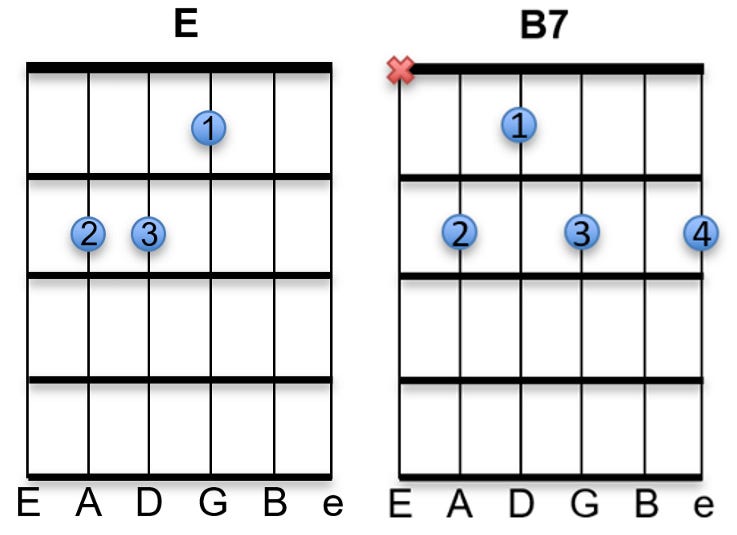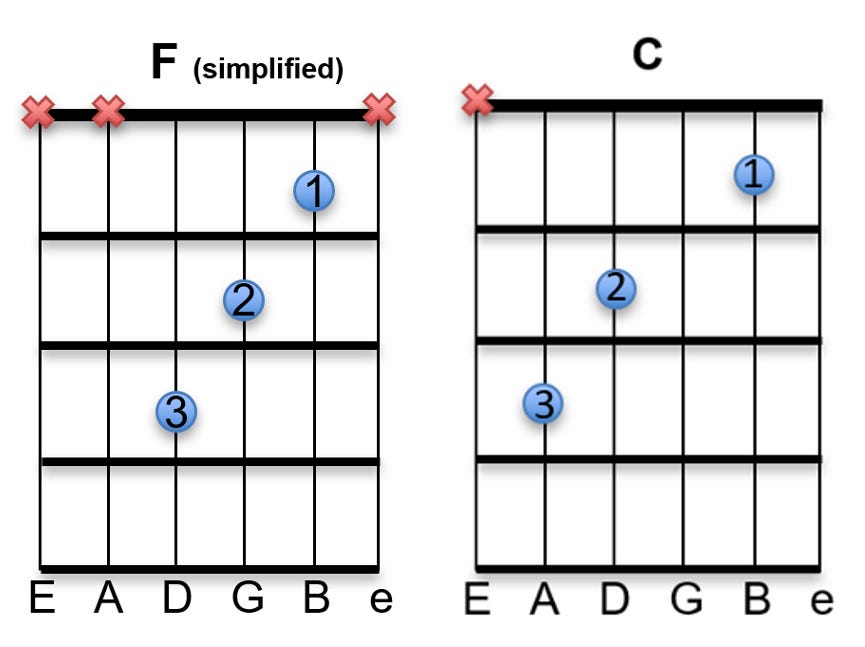Alright, so you’ve got a guitar that’s in tune, you have a general understanding of its construction, and you’ve memorized the string names (lesson 1).
Intro video:
The next step I’ll have you take is to learn the open chords and practice transitioning between them.
Here is the full list we are going to learn in this lesson:
We are going to take two chords at a time and apply them to the song “We’ve Got The Whole World In Our Hands.”
Exercise 1: C and G
Start with a close look at the diagrams below. Place fingers accordingly
(1=index; 2=middle, 3=ring, 4= pinky).
On the C chord, make sure to remove the low E string from the played strings. Ideally this is done by muting the string (often with the use of the thumb). I’ll give a demonstration of this in the video component below.
Once you’ve got each chord down on it’s own try transitioning between the two. Expect this to be slow at the start but realize that each repetition increases muscle memory and soon you will be placing each chord with ease.
Video 1: “Whole World” exercise on C and G.
Let’s now repeat this exercise on with each set of our open major chords:
Exercise 2: D and A
Once again begin with a close look at the diagrams below placing fingers accordingly.
(1=index; 2=middle, 3=ring, 4= pinky).
Pay attention to the red X indicating strings you should not play.
Video 2: “Whole World” exercise on D and A.
Exercise 3: E and B7
Once again begin with a close look at the diagrams below placing fingers accordingly.
(1=index; 2=middle, 3=ring, 4= pinky).
Pay attention to the red X indicating strings you should not play.
Video 3: “Whole World” exercise on E and B7.
Exercise 4: F and C
Once again begin with a close look at the diagrams below and placing fingers accordingly.
(1=index; 2=middle, 3=ring, 4= pinky).
Pay attention to the red X indicating strings you should not play.
Video 4: “Whole World” exercise on F and C.
On to lesson 3 where we learn the open minor chords.






